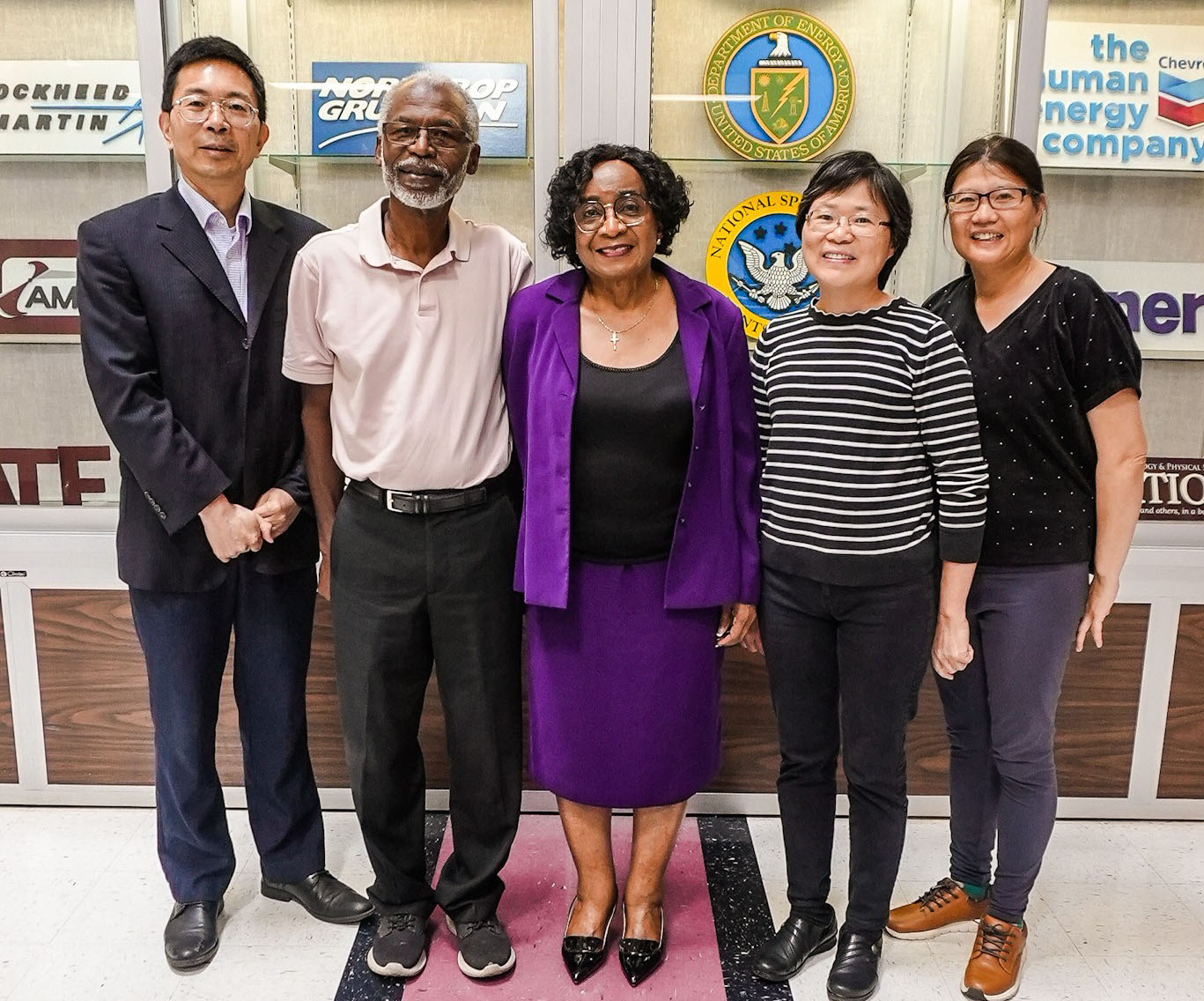Funding Allows AAMU to Acquire High-Powered Microscope for Pioneering Research

AAMU Researchers Secure DoD Grant to Enhance Nanoparticle and Biological Material Analysis
Alabama A&M University researchers have been awarded a $797,046 grant from the Department of Defense (DoD) to acquire a state-of-the-art Scanning Electron Microscopy-Energy Dispersive Spectroscopy-Electron Beam Lithography (SEM-EDS-EBL) system. This advanced equipment will allow us to examine the microstructures of electrical devices and biological materials at nanometer level. It will significantly enhance research in nanotechnology, biology, electrical engineering, and environmental sciences, with important implications for both military and civilian applications.
Lead Researchers and Project Goals
Dr. Qunying Yuan, Associate Professor in the Department of Biological Sciences, serves as the Principal Investigator for the project. The team of Co-Principal Investigators include Research Associate Professor Dr. Ernst Cebert; Professor of Microbiology Dr. Florence Okafor; Professor of Electrical Engineering Dr. Zhigang Xiao; and Assistant Professors of Electrical Engineering and Computer Science, Dr. Shujun Yang, and Research Scientist of Natural Resources and Environmental Sciences, Dr. Xinhua Xiao.
“This one-year grant will allow us to acquire an advanced SEM-EDS-EBL system equipped with a super hybrid lens, enabling us to push forward multidisciplinary research at AAMU,” said Yuan. “It will open new doors in fields like electrical engineering, biology, plant science, and environmental science, all with potential military applications.”
Impact on Research
The acquisition of the SEM-EDS-EBL system is poised to make a substantial impact across several research fields at AAMU, particularly in:
1. Food Protection and Safety: Researchers hope to optimize microbial synthesis of selenium nanoparticles for their application in food protection and test the potential of selenium nanoparticles in protecting and stabilizing food quality to generate information regarding the effects of selenium nanoparticles on protecting food quality and increasing food safety.
2. Nanomaterial Fabrication: The system will enhance research in the creation of nanomaterials for use in electronic devices, which could have defense applications.
3. Infectious Disease Control: Researchers will use SEM imaging to understand how nanoparticles (NPs) and plant extracts combat bacteria, aiding in the development of new antimicrobial agents for treating battlefield-related infections.
4. Industrial Hemp Research: The SEM-EDS-EBL system will help researchers analyze the physical and chemical characteristics of hemp fibers, contributing to the production of high-performance fibers for military clothing.
Educational Benefits
Beyond its research applications, the SEM-EDS-EBL system will also provide invaluable educational opportunities for AAMU students. Over 90% of the students trained on the system will be from underrepresented minority groups, equipping them with essential skills in imaging and analysis that are critical in fields like biotechnology, agriculture, and nanotechnology.
“This technology will expose our students, both undergraduate and graduate, to cutting-edge imaging techniques,” said Yuan. “It will also extend to high school teachers and students through our ongoing outreach programs, ensuring the next generation of scientists is well-prepared.”
Broader Community and Industry Impact
The new SEM-EDS-EBL system will be the most advanced of its kind in northern Alabama, fostering greater collaboration between AAMU and local industries. The system’s capabilities will improve the analysis of nano-electronic devices and benefit agricultural research at the AAMU’s Winfred Thomas Agricultural Research Station (WTARS), including efforts to enhance hemp fiber production for industrial applications.
This project will not only boost research capacity at AAMU but also support the University’s long-term goal of integrating teaching and research to solve real-world problems, creating a powerful platform for innovation in both the laboratory and the classroom.
(Photo l-r) Drs. Zhigang Xiao, Ernst Cebert, Florence Okafor, Qunying Yuan, Xinhua Xiao